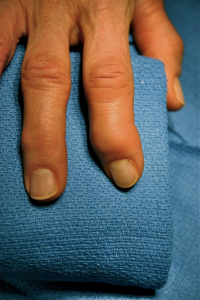 Part 1 – Medications For Osteoarthritis
Part 1 – Medications For Osteoarthritis
Osteoarthritis (OA) is a ubiquitous condition which can affect any of the joints. The most commonly affected joints are the knee, hip, and hand joints. According to the American College of Rheumatology (ACR), the treatment of OA should include medications, non-pharmacologic therapies, rehabilitation therapy, splints or other joint aids, weight loss, and patient education and reassurance. Ultimately, surgery is a treatment option. Since each one of these treatments provides only modest benefit, a multi-modal approach is recommended.
Oral Over-the-Counter Medications for Arthritis Treatment
Over-the-counter medications such as Acetaminophen, Ibuprofen, and Naproxen can be used. Only if these medications do not provide sufficient relief should prescription medications be considered. These prescription medications include other non-steroidal anti-inflammatory agents (NSAIDs), COX-2 inhibitors (celecoxib) or oral corticosteroids (Prednisone or similar agents). Additionally, analgesic medications such as Tramadol could be considered. Glucosamine with or without chondroitin may also be used. However, this medication needs to be taken for several months before reaching conclusions about its efficacy. Scientific studies have shown variable benefit from this medication depending upon the area affected by the OA.
Topical Medications
Topical medications such as Capsaicin can be used, but may be limited by the burning side effects. Of recent, other topical agents are being increasingly used in an attempt to minimize the adverse side effects of oral or injected agents. At present, there is limited data regarding the efficacy of these topical agents such as Ketamine (Rabi J. Practical Pain Management. Volume 15, Issue 6, July/August 2015: 64-68).
Injections to Treat Osteoarthritis
If the oral and topical medications are ineffective for your arthritis treatment, the affected joints can be injected. Traditionally, corticosteroids (steroids) are injected into the painful joints usually with a mixture of local anesthetic. Concerns have been raised by recent medical studies suggesting toxicity to the chondrocytes-cells which produce the knee cartilage. Alternately, viscosupplementation which does not contain local anesthetic nor corticosteroid can be injected into the painful joint. The use of viscosupplements (hyaluronic acid) is approved only for knee OA. Generally, the injections need to be given in a series of three to five injections done on a weekly basis, but can provide relief of 6 months or greater.
Platelet-Rich Plasma (PRP) for the Treatment of OA
More recently, orthobiologics advocates have suggested the injection of platelet-rich plasma (PRP) for the treatment of OA. A recent study (Filardo T, et al, AM J S Sport Med 2015, July; 43 (7): 1575-1582) reported similar improvement in function and symptom reduction with PRP injection when compared to hyaluronic acid (viscosupplementation). Please see our separate blog regarding this exciting new therapy. Please see our other articles regarding treatment of painful joints, especially non-surgical options. See Part II – Osteoarthritis (OA) – Arthritis Treatment Options – Injection Therapy If you live or you are visiting the Lehigh Valley region, including Allentown, Bethlehem, and Easton areas and you are suffering from an acute or painful neurologic or musculoskeletal condition, consider making an appointment by calling (610) 954-9400 or schedule a doctor’s visit Online.

